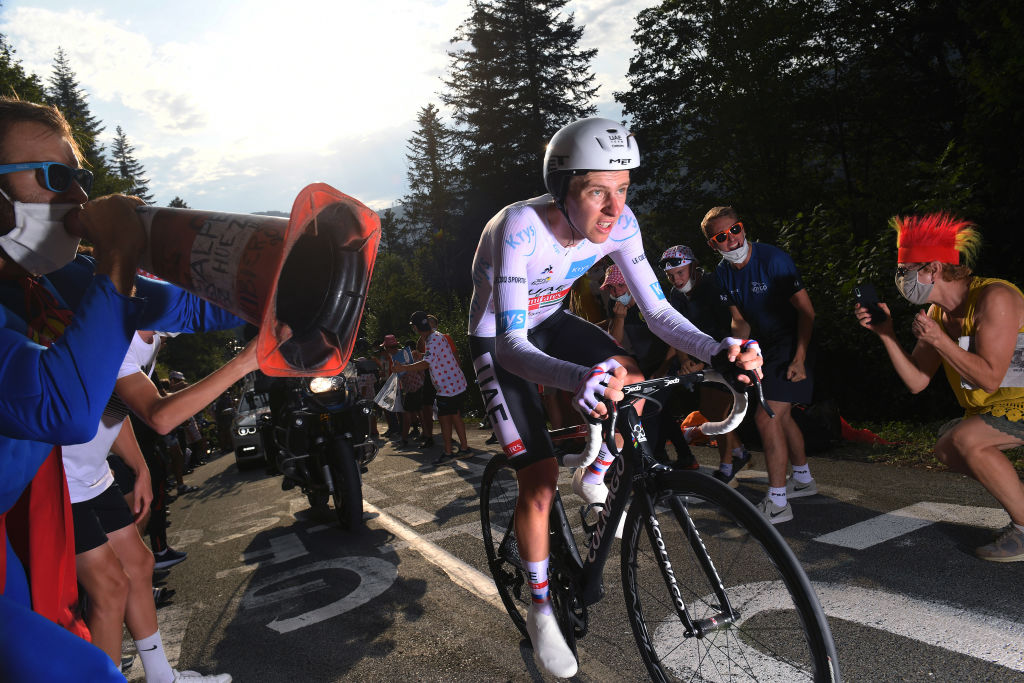Graphene: Vittoria's untiring search for increased tyre performance
Graphene 2.0 tyre range used by WorldTour teams including UAE Team Emirates, Jumbo-Visma and Education First

Vittoria's first use of graphene in its tyres came in 2015, before a second generation of the compound was unveiled in a new range of tyres and wheels last year. The wonder stuff that lowers rolling resistance, provides increased puncture protection and improves grip and wear has been used to win the past two editions of the Vuelta a España and this year's Tour de France, courtesy of Jumbo-Visma's Primož Roglič and UAE Team Emirates' Tadej Pogačar, respectively.
Last year, on a visit to Vittoria's factories in Bangkok, Thailand, Cyclingnews was able to see first-hand how the Italian company uses second-generation graphene to ameliorate its products, which also includes its carbon wheels. Since then, we've also had the opportunity to spend a significant amount of time riding and racing on tubeless-ready Vittoria Corsa Graphene 2.0 tyres, and can vouch for their speed, grip, comfort and puncture resistance, which, we're very happy to report, can so far be described as puncture-proof.
Although we plumped for a traditional tube-and-tyre combination, the use of tubeless tyres continues to gain traction in both the racing and recreational worlds, and Vittoria Corsa Graphene 2.0 tyres were used in either their tubeless or tubular versions in 2020 by WorldTour teams UAE Team Emirates, Jumbo-Visma, Education First, NTT Pro Cycling and Lotto Soudal.

Vittoria's Graphene 2.0 tyre range extends from the race-focused Corsa through the Rubino Pro and Zaffiro Pro ranges, which means that you can also enjoy the technology in your training or commuting tyres, as well as in mountain bike, gravel, cyclo-cross and track tyres.

Work on Vittoria's Graphene 3.0 and 4.0 projects – and beyond – is on-going, product director Stefan Anton explained to Cyclingnews on a factory visit, and the use of graphene in other industries is growing, too.
Best road bike tyres: fast-rolling, ultra-grippy tyres for training and racing
Vittoria Corsa Control Graphene 2.0 tyre review
Tour de France bikes: A closer look at Tadej Pogacar's Colnago V3RS
"There are some manufacturers now doing graphene-enhanced shoes, and Airbus is using graphene for structural components in aircraft. Plus, there's a lot of research going on in electricity conductivity, so using graphene components in batteries is a huge topic – and in sensor technology for foldable computers," Anton told us.
Big steps
"Vittoria's Graphene 1.0 was pure graphene: so-called 'pristine graphene', with very small impurities – very pure carbon," he continued. "Graphene 2.0 is the next development of graphene. It's functionalised: we add chemical groups to the carbon material, which allows us to have a better combination between rubber compounds and the graphene – so better dispersion in the rubber, and a better kind of chemical reaction between the rubber and the graphene, which bonds even stronger than Graphene 1.0.
The latest race content, interviews, features, reviews and expert buying guides, direct to your inbox!
"We don't know yet where it can go, but we want to develop a specific, functional graphene material for each kind of compound that fits perfectly to the rubber compound. It's a process that's very difficult to calculate because you can't make a simulation, so there's a lot of testing to try to understand what kind of impact it has if you use different-sized flakes of graphene, or a different concentration of graphene flakes.
"So we've already made the big step in improvements of Graphene 2.0 over 1.0, but 3.0 and then 4.0 is somewhere down the road, although that also goes along with the development of graphene itself in the industry," said Anton.
"It's quite a young material, and if you look at the development curve for, say, Teflon, or plastics in general, it took between 30 and 50 years to see the full, commercial bloom of that material," he explained. "We are in 'year 10', approximately, with graphene, so there is still quite some way to go."
